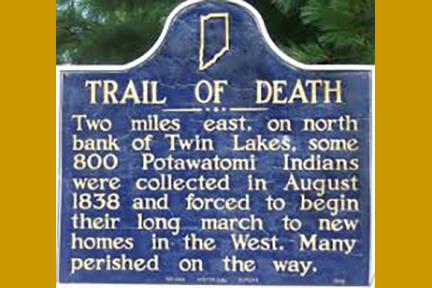
What Drove Her to Prayer?
In 1841 Philippine Duchesne arrived at a new frontier - St. Mary’s Mission in Sugar Creek, Kansas. There she lived with people who today we would call internally displaced persons. The Potawatomi had not only been forcibly displaced from their traditional homeland in Indiana, but had suffered deaths, and murders of family members by American militia along the Trail of Death. These events took place between 1838-1840, just before Philippine’s arrival.
Like us, Philippine was shaped by her faith and by the social attitudes and political context of her day. The Trail of Death was a 19th century political action that forcibly changed the lives of the Potawatomi. It also influenced Philippine and her companions, whose intention was to join in the Church’s mission of evangelization and to start a girls’ school for the Potawatomi.
What did Philippine see when she arrived among the Potawatomi with whom she could not communicate? Did she feel their suffering from the brutality of forced displacement? If so, how did she integrate the politics of her day with the Society’s mission of love and her faith in the Gospel? What did “Woman Who Prays Always” pray about during long hours while she lived among the Potawatomi? As we reach for new frontiers in our contemporary world, we too come shaped by the politics and attitudes of our day. For what do we pray? Are our social attitudes and political actions congruent with the Gospel values we profess?
Author: Sheila Smith, RSCJ, Province of the United States – Canada



